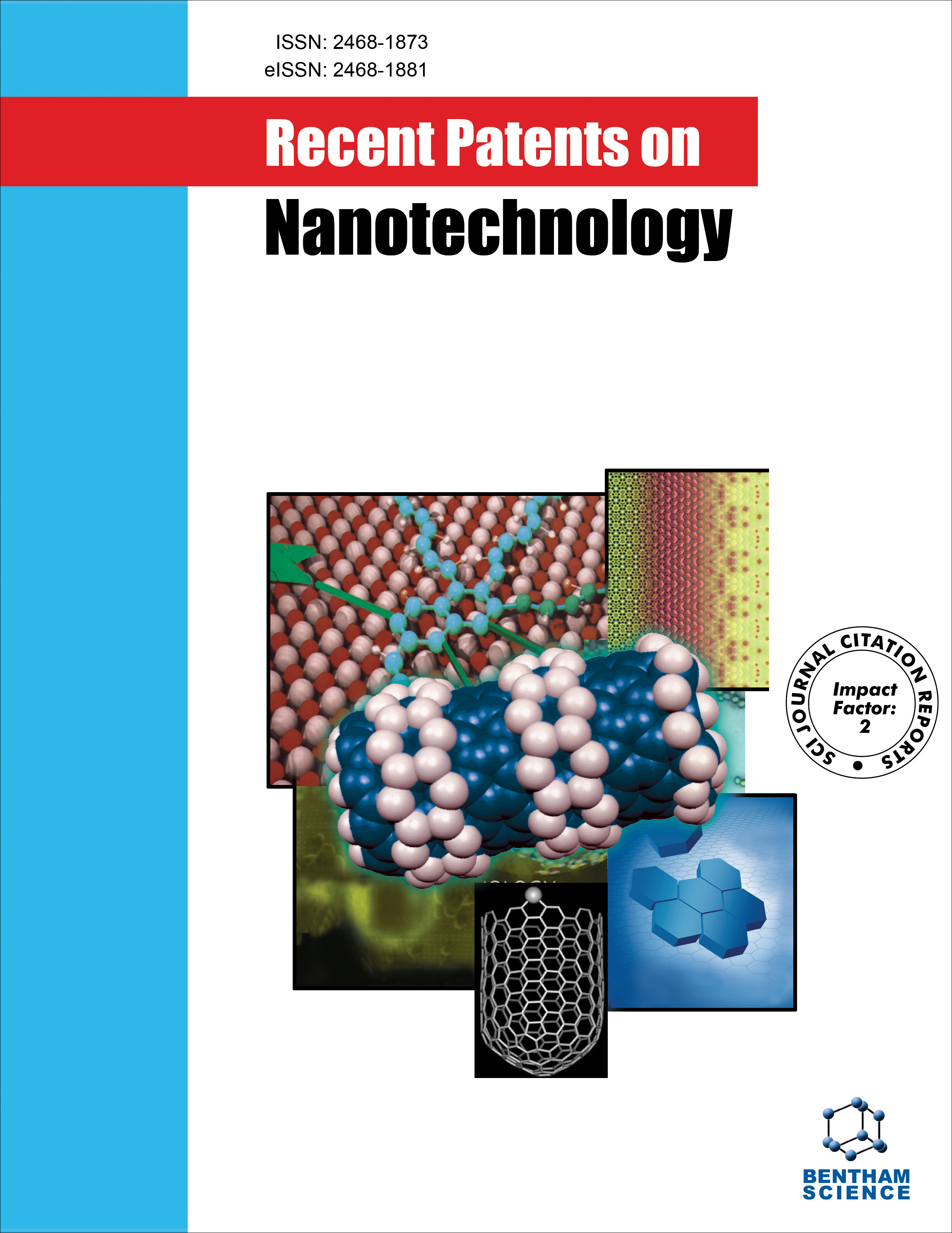Recent Patents on Nanotechnology - Volume 4, Issue 3, 2010
Volume 4, Issue 3, 2010
-
-
Recent Patents on Electrophoretic Displays and Materials
More LessAuthors: Marc Christophersen and Bernard F. PhlipsElectrophoretic displays (EPDs) have made their way into consumer products. EPDs enable displays that offer the look and form of a printed page, often called “electronic paper”. We will review recent apparatus and method patents for EPD devices and their fabrication. A brief introduction into the basic display operation and history of EPDs is given, while pointing out the technological challenges and difficulties for inventors. Recently, the majority of scientific publications and patenting activity has been directed to micro-segmented EPDs. These devices exhibit high optical reflectance and contrast, wide viewing angle, and high image resolution. Micro-segmented EPDs can also be integrated with flexible transistors technologies into flexible displays. Typical particles size ranges from 200 nm to 2 micrometer. Currently one very active area of patenting is the development of full-color EPDs. We summarize the recent patenting activity for EPDs and provide comments on perceiving factors driving intellectual property protection for EPD technologies.
-
-
-
Morphology Tailoring of Nano/Micro-Structured Conductive Polymers, Composites and their Applications in Chemical Sensors
More LessAuthors: Xingfa Ma, Mingjun Gao, Xiaochun He and Guang LiConductive polymer is one of the important multi-functional materials. It has many applications in lightemitting diodes, chemical sensors, biosensors, et al. This paper provides a relatively comprehensive review on the progress of conductive polymer and composite as sensitive film for sensors to chemical vapors including patents, papers and our preliminary research results. Especially, the feature of conjugated polymers, the processing technology, doping characteristics and some factors affecting gas responses are discussed. Otherwise, the developments of nanostructured conductive polymer and organic-inorganic hybrid film sensor with high sensitivity and rapid response to vapors are also described, and some suggestions are proposed.
-
-
-
Recent Progress on Fabrication of Calcium-Based Inorganic Biodegradable Nanomaterials
More LessAuthors: Ming-Guo Ma and Jie-Fang ZhuCalcium-based inorganic biodegradable nanomaterials (CIBNs) including calcium phosphate, hydroxyapatite (HA), calcium silicate, calcium carbonate, and calcium sulfate, are important materials and have been widely used in biomedical field. Although CIBNs have been intensively studied, there are only a few synthesis methods that showed promising characteristics for practical applications. Here, we intend to review recent progress in the synthesis of the CIBNs including both patents and papers. In addition, the mechanisms of CIBNs are introduced. Finally, the current and future developments are put forward. In summary, we briefly review the patents and the patent-interrelated papers concerning the fabrication, mechanism, and future development of CIBNs in this mini-review. The paper provides an overview about the potential application of nanotechnology in biomedical field.
-
-
-
Nanoparticles for Improved Therapeutics and Imaging in Cancer Therapy
More LessNanotechnology involves creation and utilization of materials, devices or systems on the nanometer scale. The field of nanotechnology is currently undergoing explosive development on many fronts. The technology is expected to generate innovations and play a critical role in drug delivery and imaging. There has been tremendous progress made in the use of polymer and lipid based nanoparticles (NPs) for drug delivery and imaging. Recently, more attention has been given to incorporating inorganic NPs such as gold and magnetic NPs with both imaging and therapeutic capabilities into polymer and lipid based NPs for improved therapy and imaging in cancer treatment. In this review article, the recent progress in the development of multiplex polymer, lipid, and inorganic NPs towards optimizing techniques for drug delivery and multimodal imaging will be discussed along with the relevant patents.
-
-
-
Semimetal Nanowires and their Superlattices in Anodic Alumina Membranes
More LessAuthors: Liang Li, Xincun Dou and Guanghai LiSemimetal Bi and Sb are important thermoelectric materials. Since theoretical calculation predicted that thermoelectric efficiency can be improved as the dimension of materials decreases, the synthesis and physical properties of Bi-based nanostructures (nanowires, nanotubes, nanobelts, nanoplates) have attracted great interests. This review begins with a survey of the patents and reports on the recent developments of Bi-based nanowires. We focus on Bi-based nanowires fabricated by pulsed electrodeposition in anodic alumina membranes, which are main achievements in our group. Based on the literatures and patents, from synthesis of Bi-based nanowires and their alloys and superlattices, to physical properties including electronic transport, thermal expansion, and thermoelectricity will be demonstrated.
-
-
-
Recent Developments in the Fabrication of Ordered Nanostructure Arrays Based on Nanosphere Lithography
More LessBy Xueyong WeiSince it was invented two decades ago, Nanosphere Lithography (NSL) has been widely studied as a low cost and flexible technique to fabricate nanostructures. Based on the registered patents and some selected papers, this review will discuss recent developments of different NSL strategies for the fabrication of ordered nanostructure arrays. The mechanism of self-assembly process and the techniques for preparing the self-assembled nanosphere template are first briefly introduced. The nanosphere templates are used either as shadow masks or as moulds for pattern transfer. Much more work now combines NSL with other lithographic techniques and material growth methods to form novel nanostructures of complex shape or various materials. Hence, this review finally gives a discussion on some future directions in NSL study.
-
-
-
Patent Selections:
More LessThe patents annotated in this section have been selected from various patent databases. These recent patents are relevant to the articles published in this journal issue, categorized by different nanotechnology methods, processes and techniques involved.
-
Volumes & issues
-
Volume 20 (2026)
-
Volume 19 (2025)
-
Volume 18 (2024)
-
Volume 17 (2023)
-
Volume 16 (2022)
-
Volume 15 (2021)
-
Volume 14 (2020)
-
Volume 13 (2019)
-
Volume 12 (2018)
-
Volume 11 (2017)
-
Volume 10 (2016)
-
Volume 9 (2015)
-
Volume 8 (2014)
-
Volume 7 (2013)
-
Volume 6 (2012)
-
Volume 5 (2011)
-
Volume 4 (2010)
-
Volume 3 (2009)
-
Volume 2 (2008)
-
Volume 1 (2007)
Most Read This Month


